Top 8 Strategies for Effective Social Media Content Distribution
Boost your brand's visibility through strategic social media content distribution. Learn how to effectively share your message across various channels.

You’ve spent hours crafting the perfect piece of content. Great. But if it doesn’t reach your audience, does it even matter? Creating content is just half the equation — distribution is where the real magic happens.
Moving forward, we’ll break down what social media content distribution really means, how it supports your content strategy, and the actionable steps you can take to get your content in front of the right eyes, on the right channels, at the right time.
Key takeaways
-
Repurpose content for multiple formats: Don’t reinvent the wheel: turn top-performing blogs, videos, or reports into snackable social posts, reels, carousels, or infographics to stretch their lifespan and reach.
-
Bridge your email list and social channels: Use your newsletter to showcase your best social posts, embed UGC, and invite subscribers to engage socially, while teasing email sign‑ups via social.
-
Partner with influencers: Co-create or have experts share your content to tap into new audiences and add credibility through trusted voices.
-
Launch employee advocacy: Boost reach by empowering staff with easy-to-share visuals and recognition—because every team member is a potential brand amplifier.
-
Fuel distribution with paid amplification: Back your strongest organic content with targeted ads, A/B tests, and retargeting to maximize visibility and conversions.
-
Build content pillars: Center your content on core themes, then recycle and distribute insights from each pillar across all platforms.
en.wikipedia.org -
A/B test your distribution tactics: Run controlled experiments on variables like format, timing, channel, and messaging to fine-tune what drives results.
-
Activate UGC campaigns: Encourage fans to post your content using branded hashtags and feature that user‑generated input to boost authenticity and organic sharing.
What does social media content distribution imply?
Social media content distribution refers to the process of sharing, publishing, and promoting content (posts, videos, articles, or infographics) across social media platforms to reach and engage a wider audience.
Here’s a social media distribution strategy as an example. We published a detailed report on 2025 social media benchmarks.
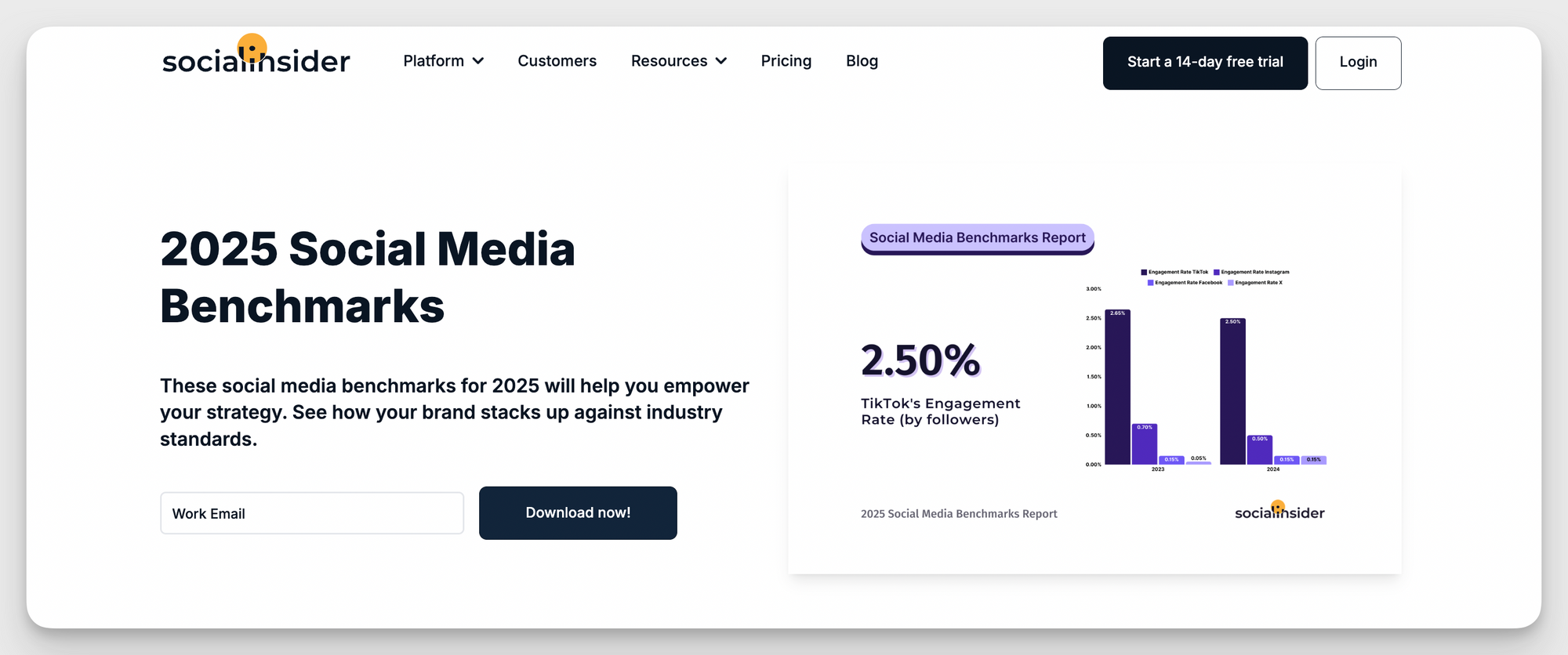
The website served as the primary launchpad for this piece of content, targeting our existing website visitors and regular blog readers. It was also optimized for on-page SEO, enabling it to attract traffic through search engines, bringing in another layer of organic visibility.
From there, we extended its distribution by sharing tidbits on LinkedIn.
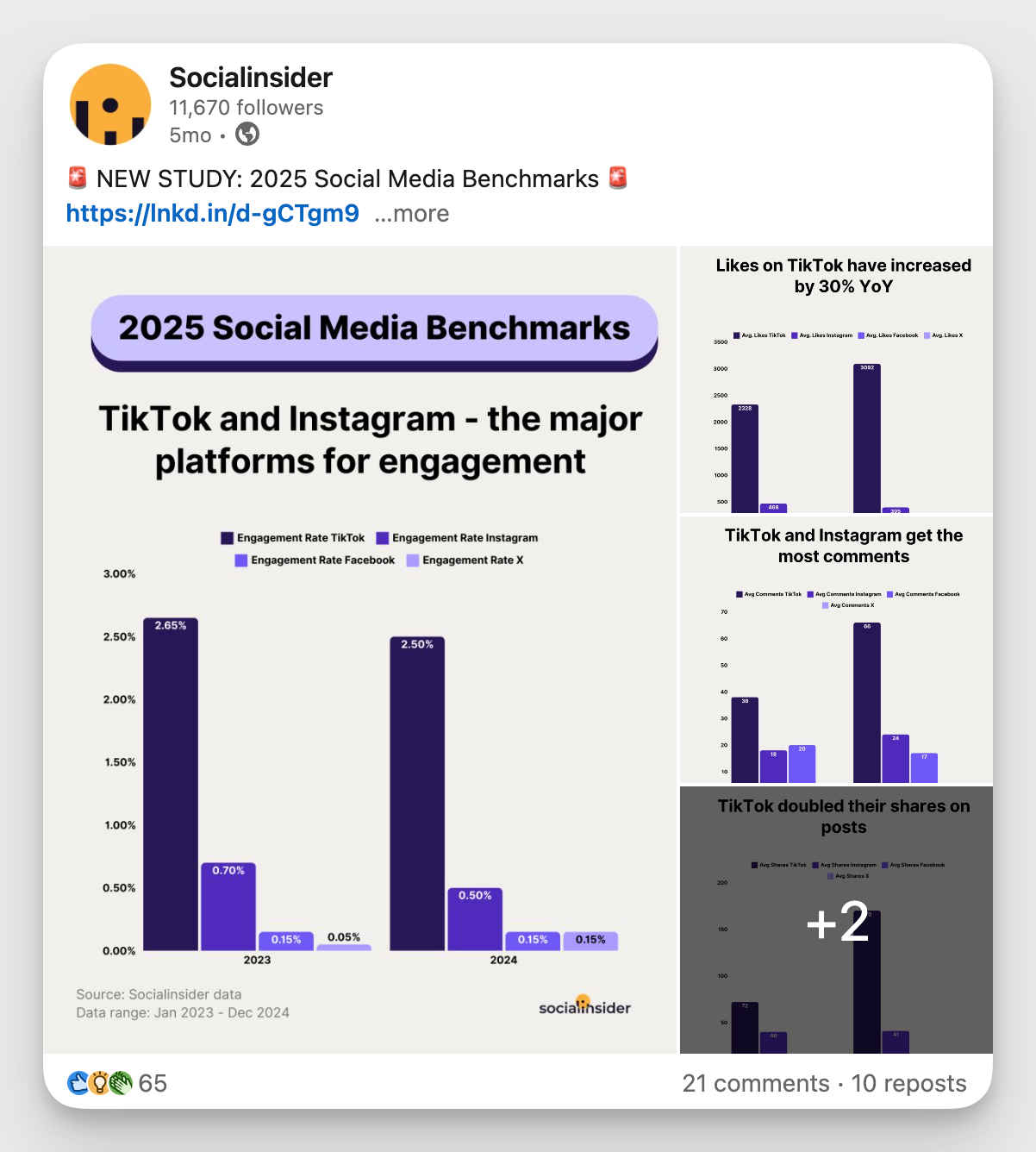
This post linked back to the original report, helping us drive traffic while engaging audiences where they already spend time.
This is what social media content distribution looks like. It’s a multi-channel system designed to make your content discoverable wherever your audience is most likely to engage.
Why is a strategic approach to social media content distribution needed?
You don’t want to distribute every piece of content. At the same time, you can’t distribute every piece of content in the same way. This calls for a comprehensive brand strategy for social media content creation and distribution.
Start by clearly identifying all your available channels, like your website, social media platforms, email list, influencer partners, and even journalists. Build channel distribution strategies and plans for each.
Instead of posting and hoping for results, you map out how each piece of content can be distributed, reused, or amplified. A blog post, for example, can become a LinkedIn carousel, an Instagram story, a Twitter thread, and part of your next email newsletter.
To create that social distribution plan, gain insights by following these two steps.
- Run a social content performance audit: This shows you which posts are performing well, which platforms are driving engagement, and where you’re missing opportunities. Use tools like Socialinsider to make this social media audit easy and quick.
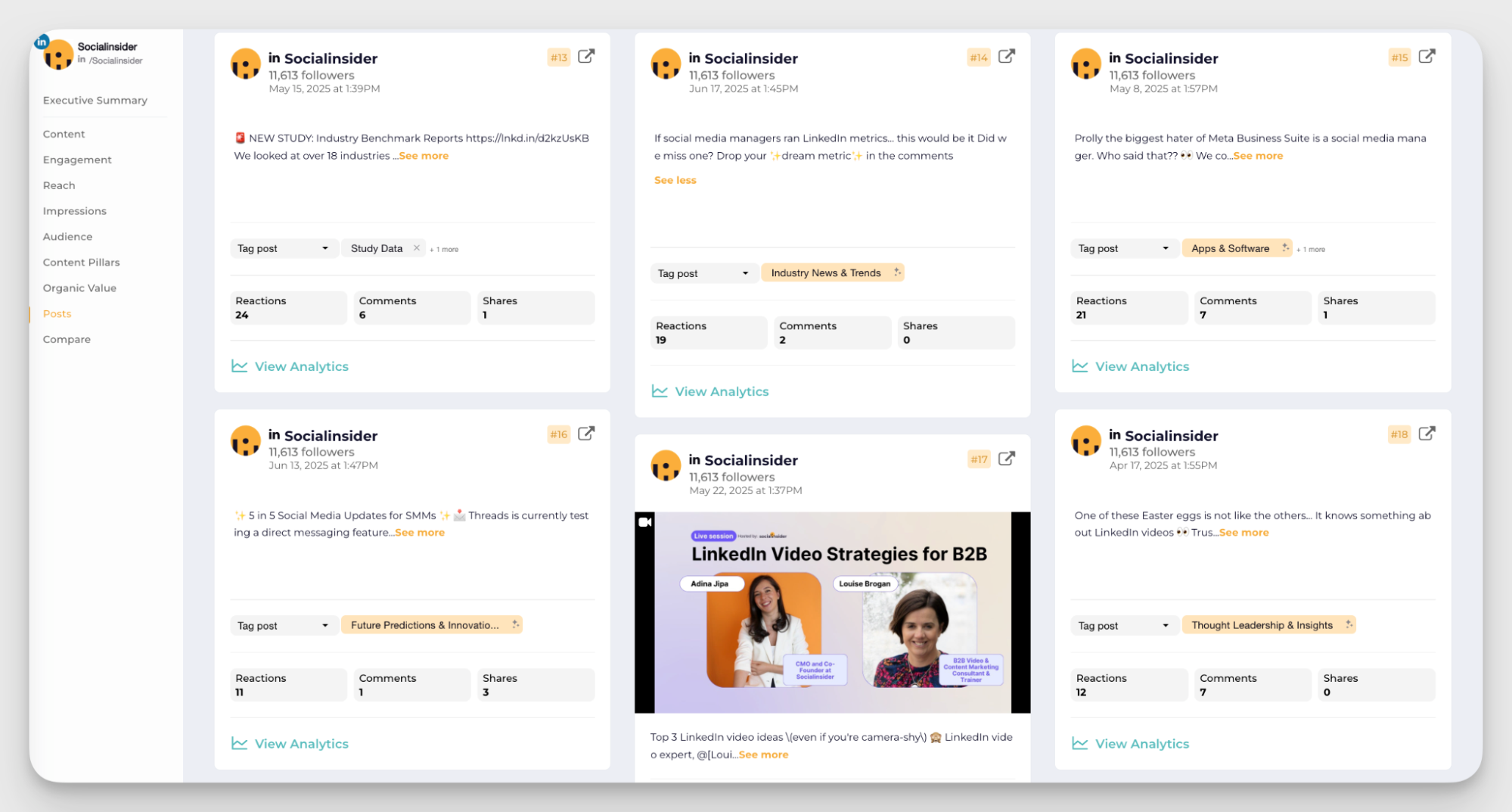
- Map content to audience segments: Understand your audience preferences. For example, a deep-dive industry report might resonate more with decision-makers on LinkedIn, while a visual stat or short quote from the same report could work better for the audience on Instagram.
Here’s how we follow a strategic approach at Socialinsider. We focus heavily on content marketing, with our website being the most effective channel for getting clients. We create regular social media studies that we publish on our website (these being our most converting content type, belonging to BOFU) and then create distribution plans.
So the insights of a study are then promoted and distributed across various channels through social media posts, dedicated emails, live webinars, influencers, and journalists.
And specifically for social media, we create content that is tailored for multiple stages of the marketing funnel.
8 strategies for effective social media content distribution
Now that you have a preliminary plan ready, here are 8 tried-and-tested strategies for distributing content on social media.
#1. Leverage content repurposing
This is one of the most fundamental and easiest ways to distribute your content. It’s a content distribution strategy we follow all the time at Socialinsider.
Here are five content repurposing ideas for your brand.
- Turn blog posts into bite-sized content: Take interesting statistics, real-life examples or learnings from the blog post and share them on social media. Here’s how we did it.
Blog content:
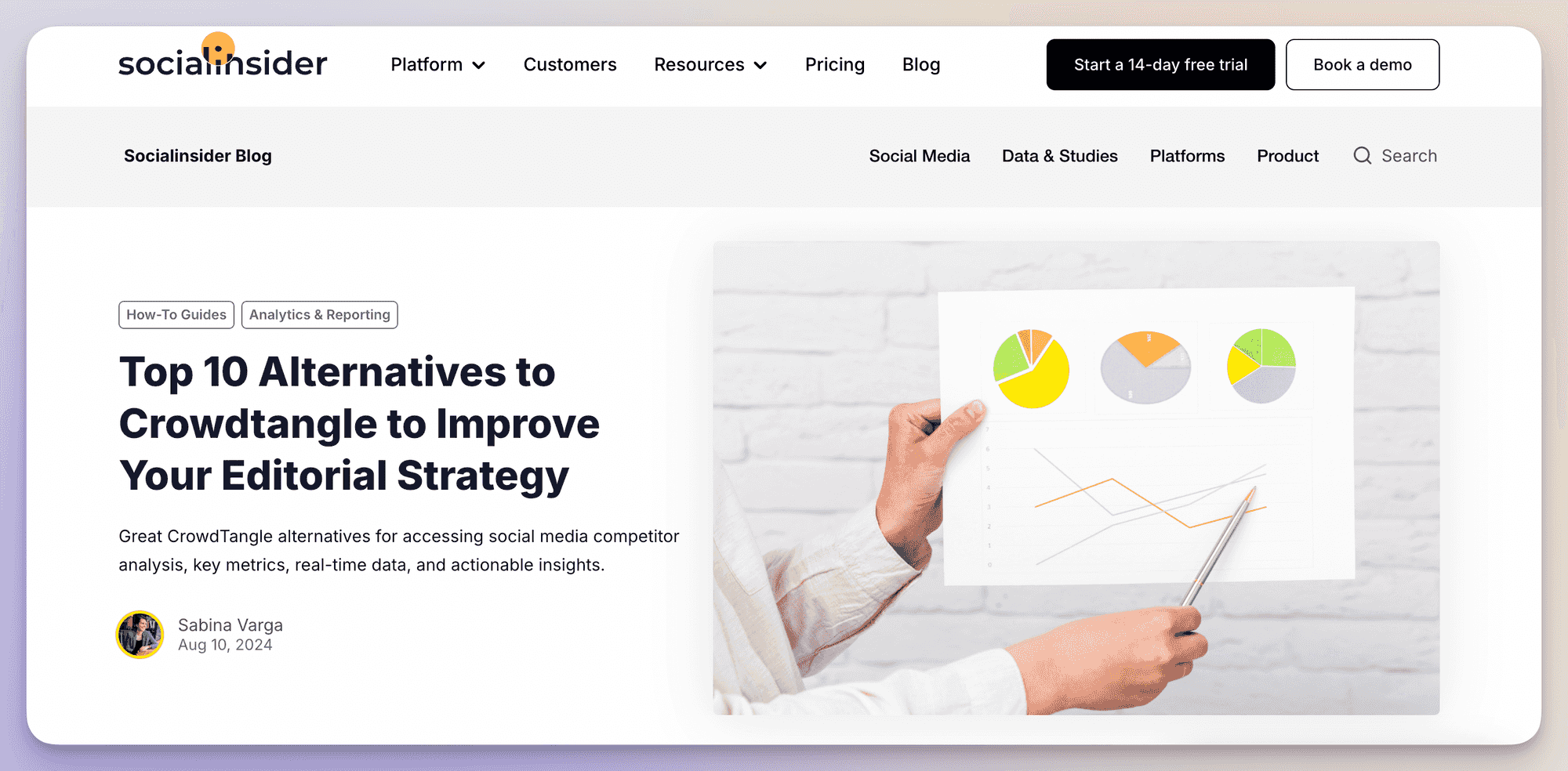
Turned into a LinkedIn post:
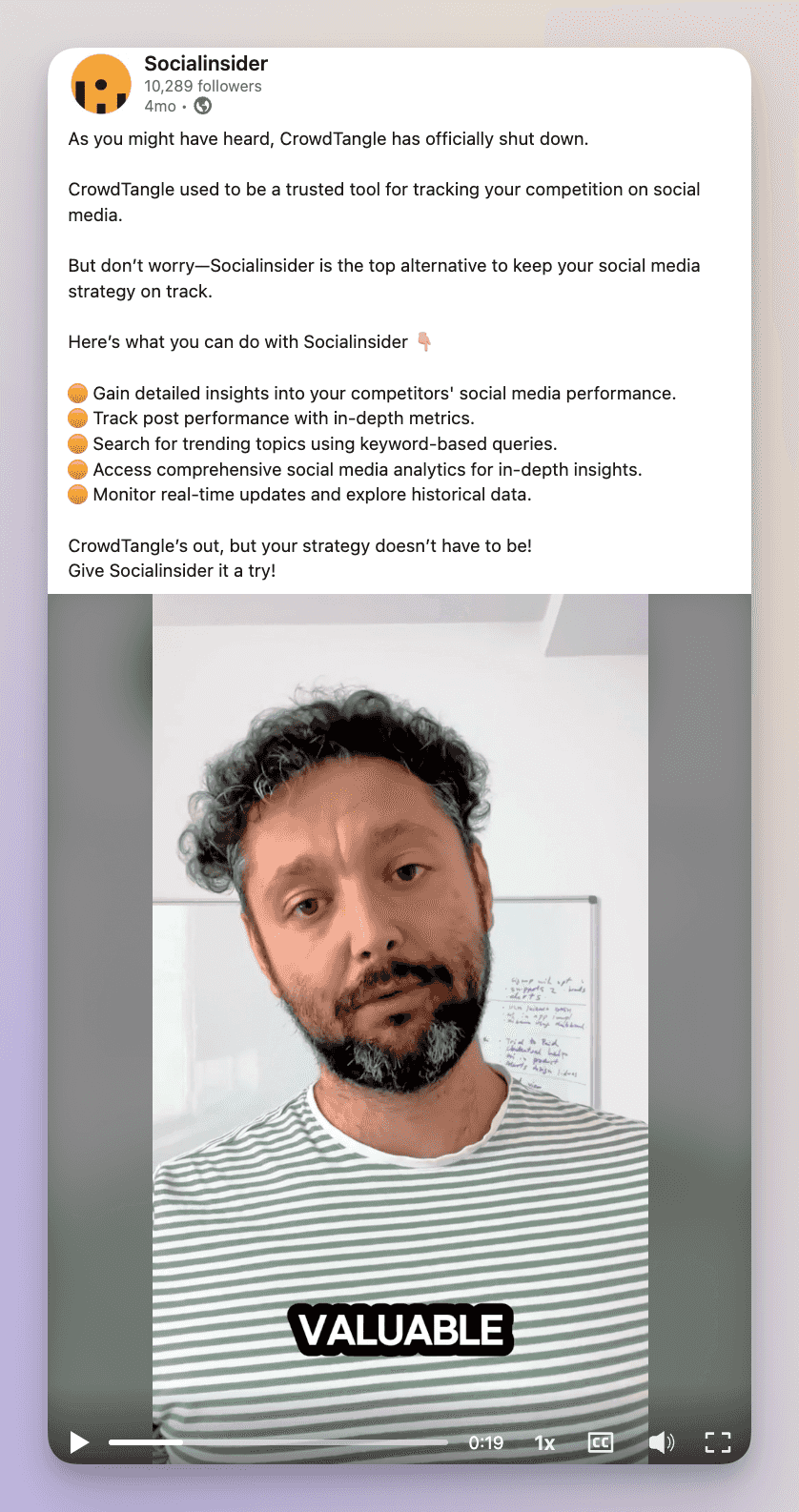
- Turn videos into multiple content types: We run a lot of live sessions with industry experts. Once the live session ends, we turn the content into different formats like YouTube video, 2-3 shorts for Instagram and LinkedIn, newsletter, 1 long-form playbook article, and a toolkit for sharing with our guest.
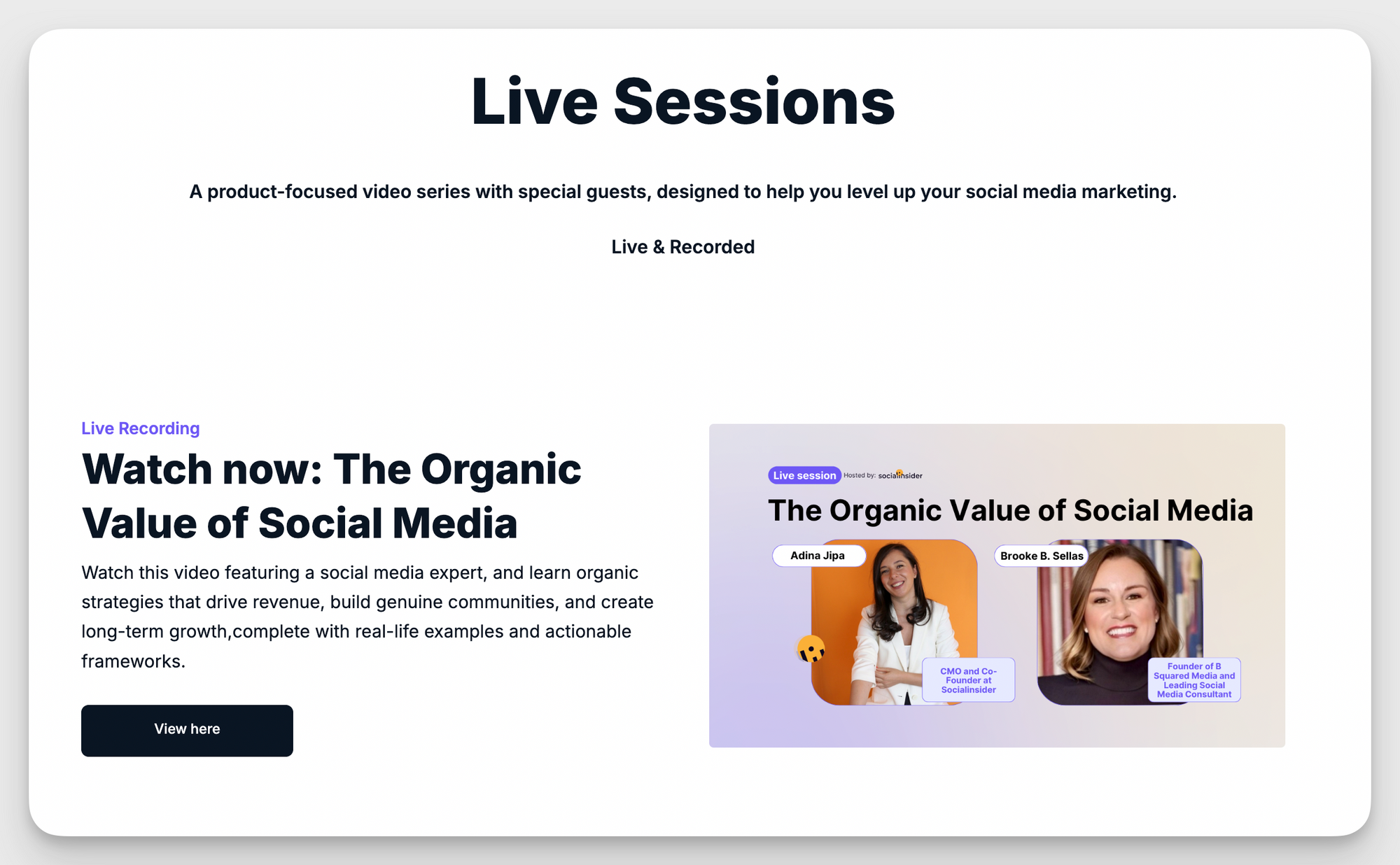
- Convert research reports into infographics: If you conduct data surveys and reports, turn the important stats into an infographic for social media.
- Convert podcasts into visual content: Instead of just converting podcasts into short videos for Reels or Shorts, take some valuable quotes and share them through text content on X (Twitter) and LinkedIn.
#2. Create a connection between your mailing list and social media
You must have already seen brands sharing links to their social profiles in emails. It looks like this.
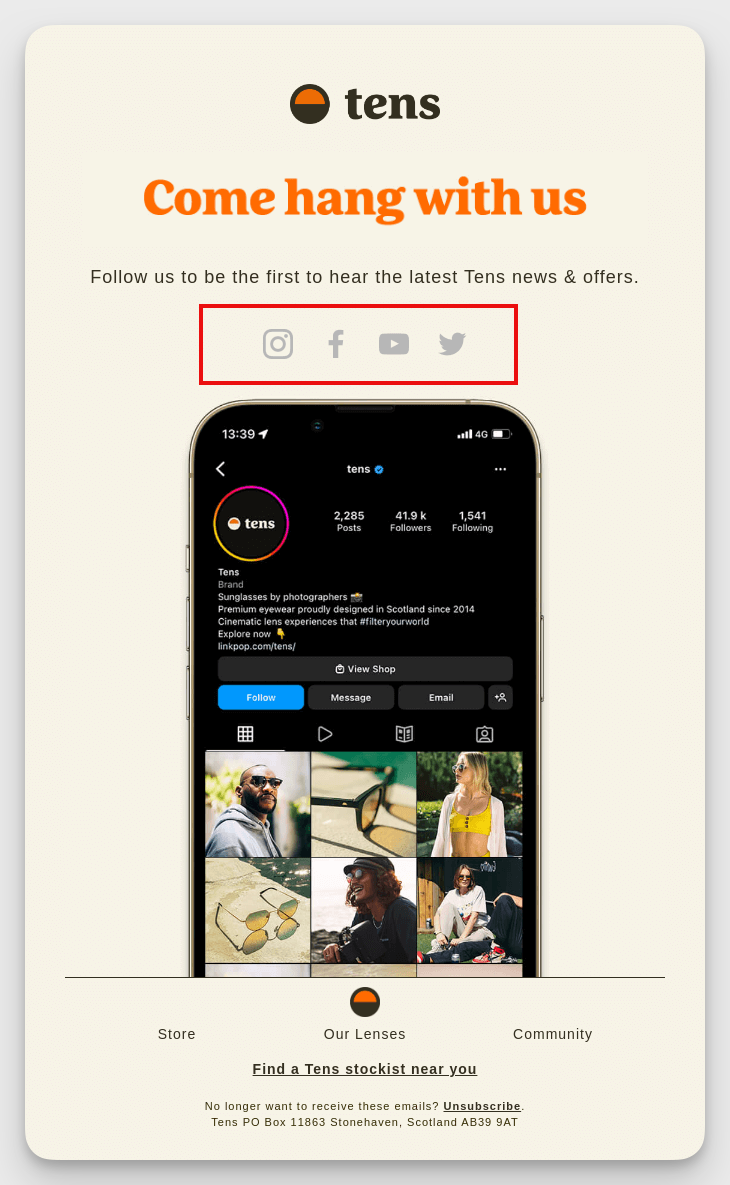
You can take this one step further with content distribution. You can promote your social content via email.
Here are three ways.
- Send a roundup of the week’s social content: Use your email newsletters to reshare high-performing social posts. Add a ‘What we posted this week’ section with direct links or embeds of your latest posts on LinkedIn, Instagram, or X. This drives your most engaged audience (email subscribers) back to your social channels.
- Reuse content across formats: Turn your email content into social posts, especially if you’re sharing tips, curated links, or opinions. Similarly, repurpose social comments or engagement into new email segments. For example, an email that starts with “This sparked a great discussion on LinkedIn.” You can share a short summary and encourage readers to visit that specific post and leave their thoughts.
- Highlight social proof in emails: Have a lot of UGC videos that have gone viral on social media? Showcase them in your newsletter. This reinforces credibility and encourages email readers to check and engage with your social profiles. You can even thank these subscribers who shared UGC on your social media. This makes them feel seen and encourages them to create more content for you.
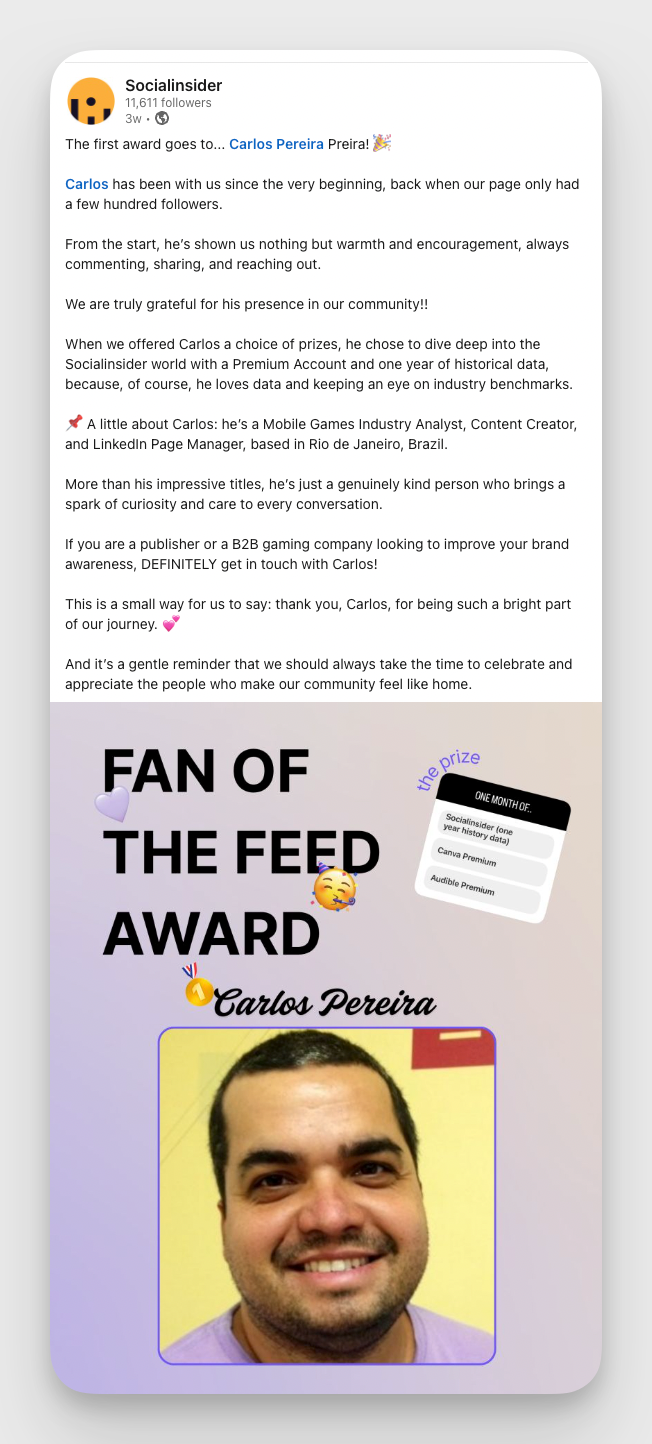
- Promote your newsletters/email roundups on social: As your mailing list is a crucial avenue for content distribution, encourage your social users to sign up for it. Highlight the value it offers. For example, exclusive insights, early access to reports, or curated industry updates. Use strong CTAs like ‘Join 10,000 marketers who get our weekly tips’ or ‘Get this guide straight to your inbox.’ Share sneak peeks of recent emails as posts or Stories, and include sign-up links in your bio, pinned posts, and swipe-ups.
#3. Use influencer partnerships for promotion
Want your content to reach target audiences that you have been unable to attract? Rely on influencers.
The simplest way is to ask them to share your content. These could be exclusive data reports, original research, thought-leadership pieces, or even engaging social campaigns. For example, if you’re hosting an event, you can ask influencers to share that content and get more people to attend.
Other than that, influencers can help with social media content distribution in these two ways:
- Co-create content: Co-creating content with influencers is like getting a VIP pass to someone else’s party, except you're bringing the punch. When you team up on a blog post, video, or social series, the influencer is naturally inclined to share it because they’re in it. That means instant access to their audience, without cold outreach or paid boosts.
For example, our founder, Adina often runs these live sessions with social media experts.
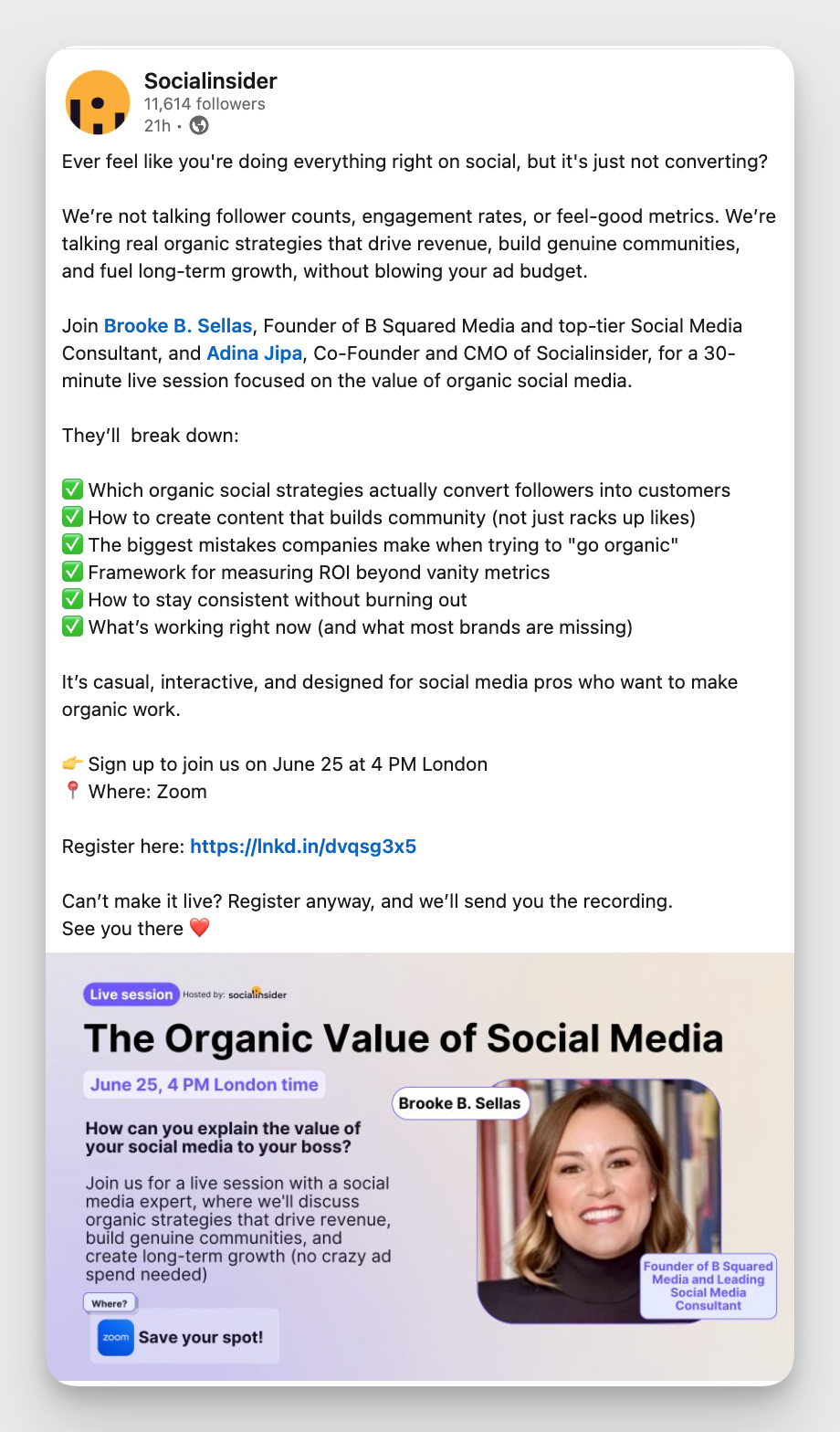
Most of these experts then distribute this content to their audience. It’s like a win-win for both of us.
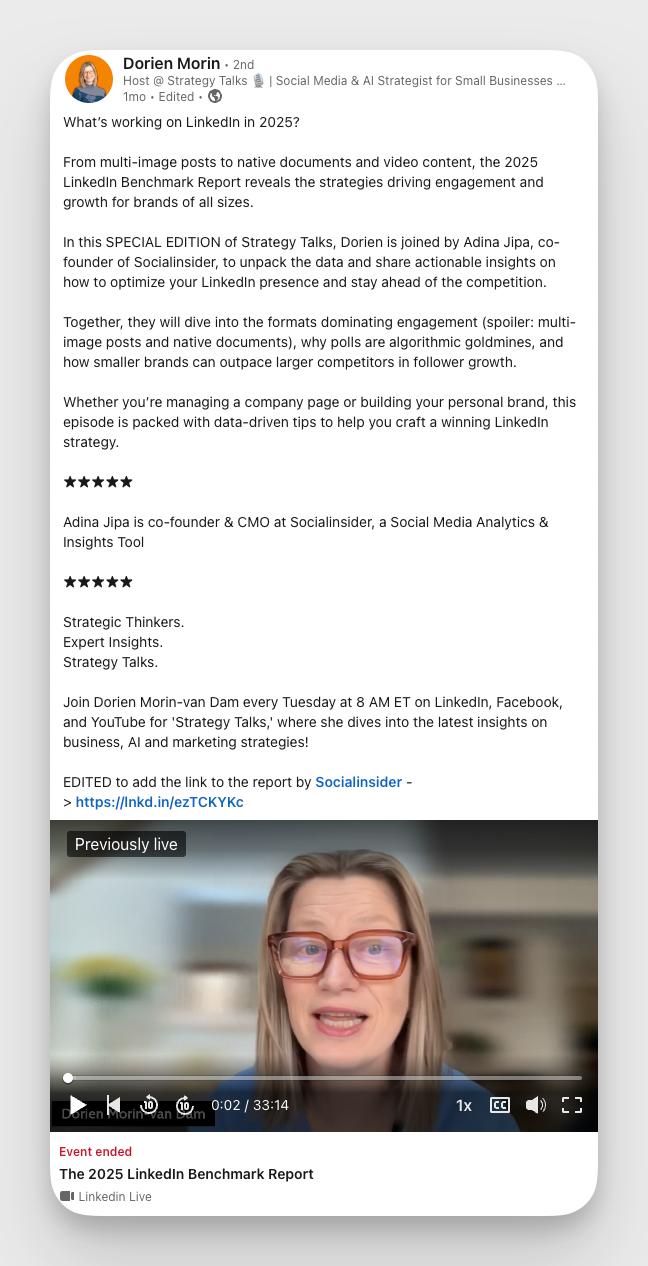
- Include influencer insights in your content: Quote industry experts and leaders in your content. Get in touch with them for personalized inputs for your blog or video series. Once it’s live, share the final piece with them. When people see their name or quote in quality content, they’re far more likely to re-share it with their audience, especially if it positions them as a thought leader.
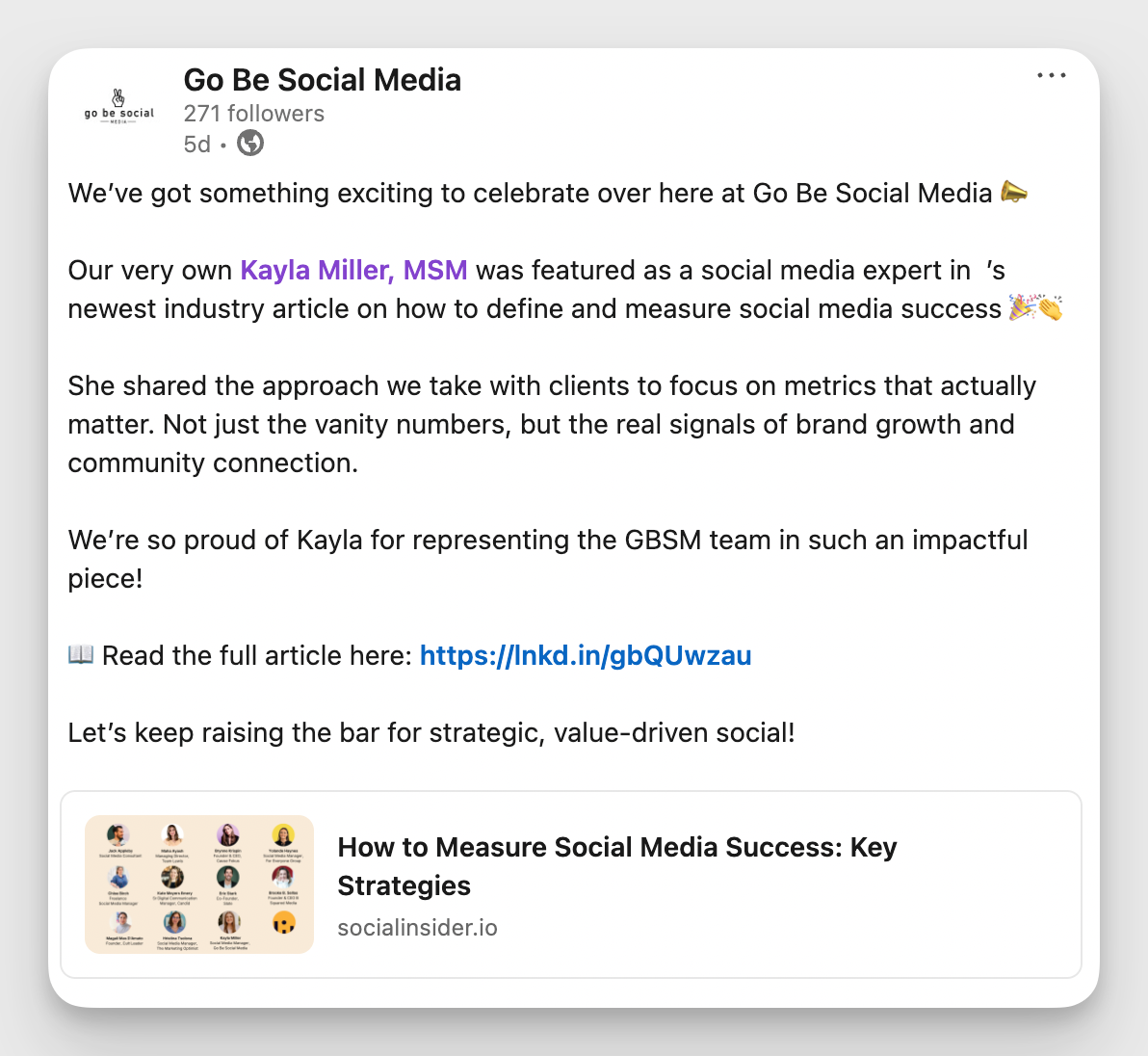
Before you plan influencer partnerships, here are three tips to build strong relationships with influencers:
- Engage consistently before pitching: Don’t slide into their inbox out of nowhere. Spend time engaging with their content. Read their posts, watch their videos, and show genuine interest.
- Share and comment regularly: Help boost their content by sharing it on your own channels and leaving thoughtful comments. This gets you on their radar in a natural, non-pushy way.
- Offer value without expecting anything: Recommend their work, include their quotes in your content, or send helpful resources, without immediately asking for a favor. Build trust first.
#4. Create an employee advocacy program for social media
As a founder or a social media manager, you can only do so much. But imagine all your teams actively posting on social media. Think of the brand awareness you can generate.
One brand that instantly comes to mind is Notion. Many of their employees constantly share Notion’s product updates and distribute content that their audience would like. This organic amplification builds trust and extends the brand’s reach far beyond official channels.
Here are three ways you can encourage employees to distribute content.
- Create visual assets that employees can use: Not everyone is comfortable writing captions from scratch, so giving them plug-and-play visuals lowers the barrier to sharing. These branded images, short videos, or graphics also ensure your content stays consistent and on-brand across platforms.
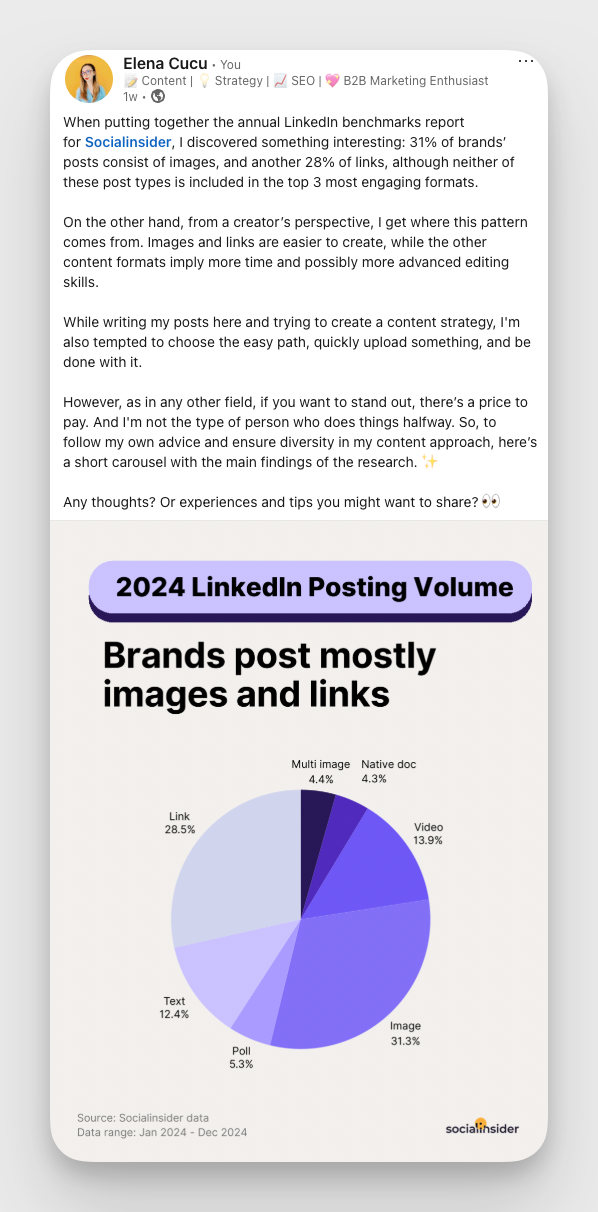
- Educate them on the perks of building a personal brand: Help employees understand that sharing company content isn’t just good for the business, it’s great for them, too.
Show real examples of employees who’ve built credibility by consistently posting thought leadership, insights, or behind-the-scenes content. When employees see the personal upside, they’re much more likely to participate in content distribution willingly and consistently.
- Share employee social media wins across the company: Gamify content sharing with a leaderboard or internal challenge that rewards employees for distributing content on social media. Track social media metrics like engagement, clicks, or post frequency, and offer fun incentives, like lunch with leadership, swag, or public recognition.
- Offer social media training and support: Not every employee feels confident about what or how to post. Provide short training sessions, templates, and clear do’s and don’ts to make them feel supported. When people know the guardrails, they're far more likely to participate. You can even assign an internal point person to answer questions and help them get started.
#5. Create a paid social media content distribution plan
Want to get your content in front of people fast? Paid is the way to go.
When you boost content with paid ads, you're not just pushing posts, you’re placing them exactly in front of the people who matter. Want to get your new blog in front of CMOs in SaaS companies? Or retarget people who visited your product page but didn’t convert? Paid makes that happen.
It also gives your top-performing content a second life. You already know what works. Now fuel it with budget and let it scale.
Even better? You can test different headlines, visuals, and formats to see what clicks. Literally.
For example, you don’t even have to use a third-party tool to set up A/B testing. You can simply head over to Meta Business Suite and set up the variations you want to test.
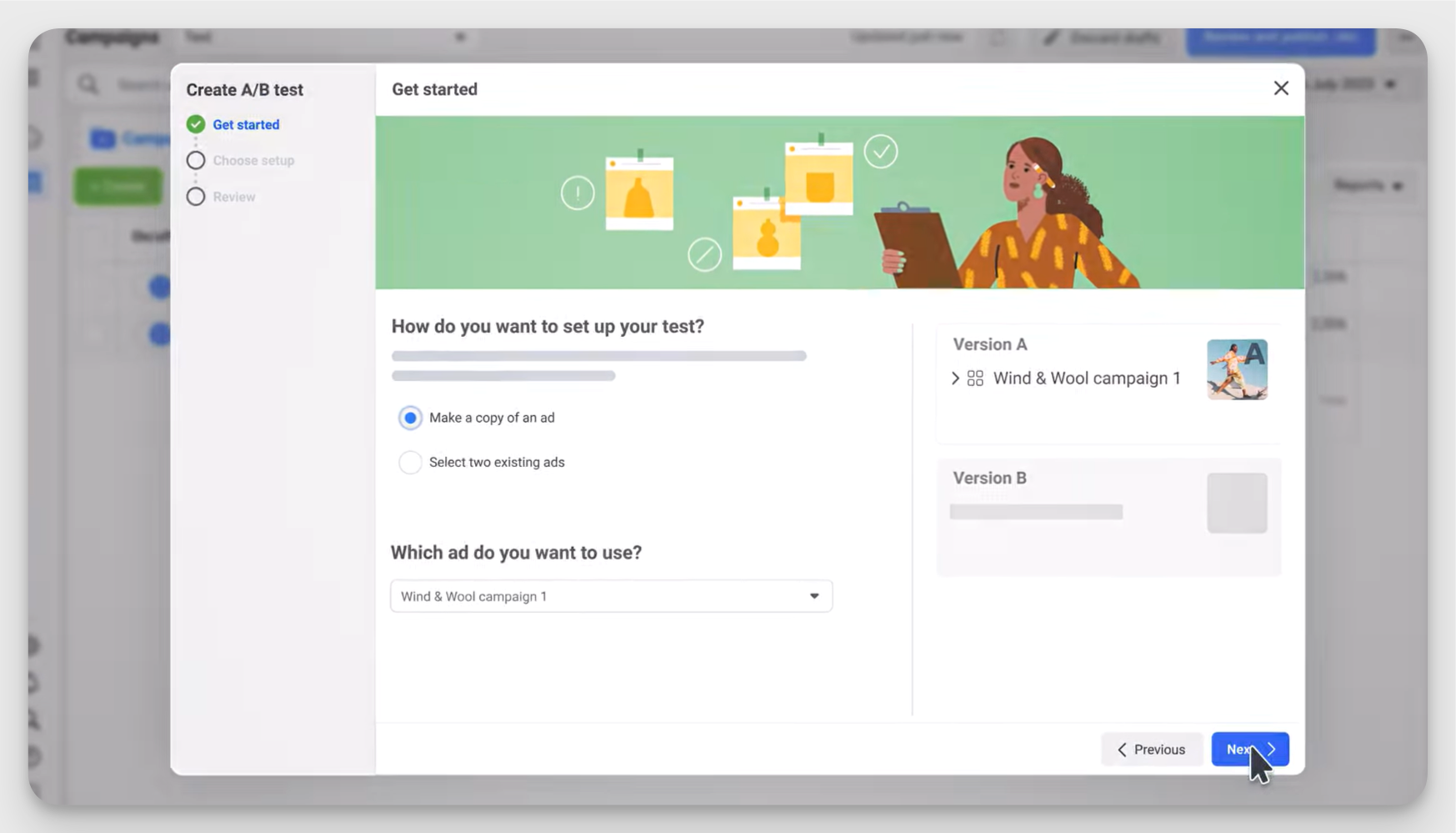
Here are three tips to support your paid content distribution strategy.
- Test content organically before investing in promotion: Have you distributed content on social media already? If not, do that first. See the traction it gets. Does it get good engagement? If yes, then that’s a strong contender for promotion. If not, you might want to spend your ad budget on distributing some other content.
- Identify high-performing content for paid amplification: What content is already resonating well with your audience? Would further boosting that content drive traffic or conversions? Ask these questions while shortlisting. We often use Socialinsider to quickly get a sneak peek into our top-performing content.
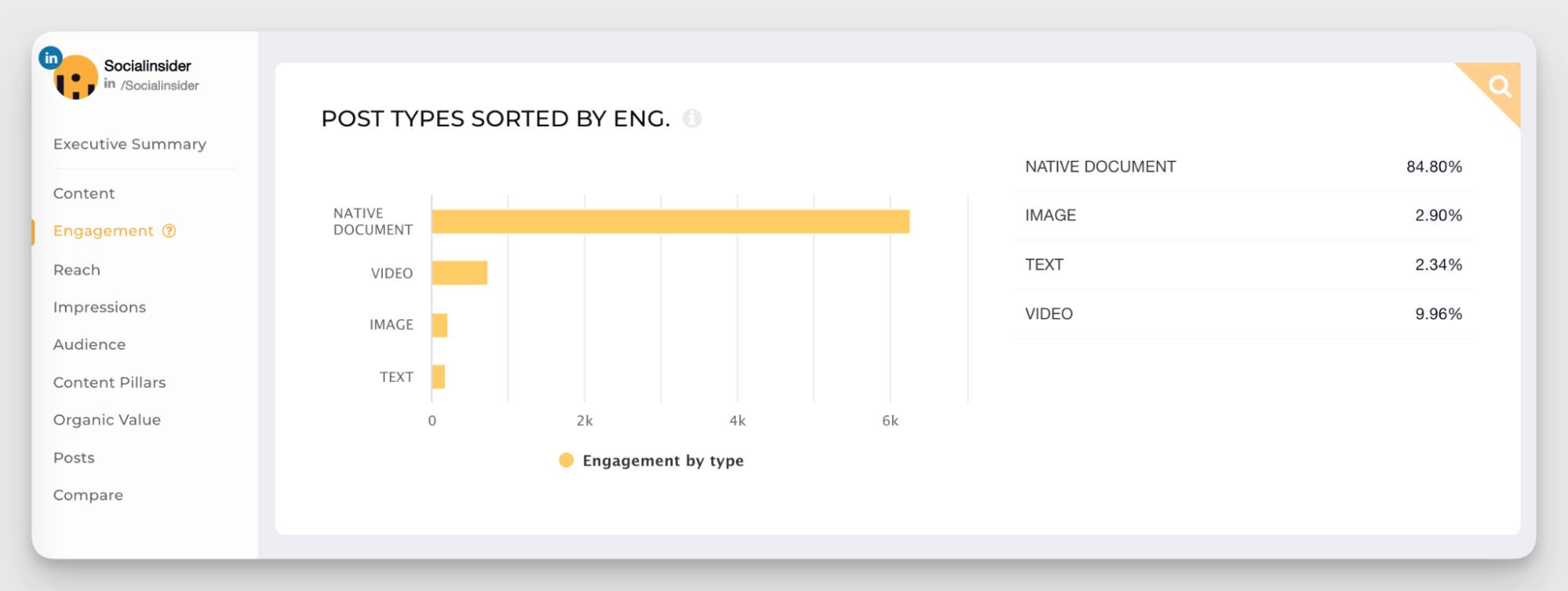
- Measure paid vs organic performance ROI: You’re spending hundreds of dollars on paid ads. But what if organic is the clear winner for your brand? You’ll only get to know if you compare organic vs paid performance.
Our new feature helps with exactly that. It estimates the ad budget you would have needed to achieve the same results through paid promotion.
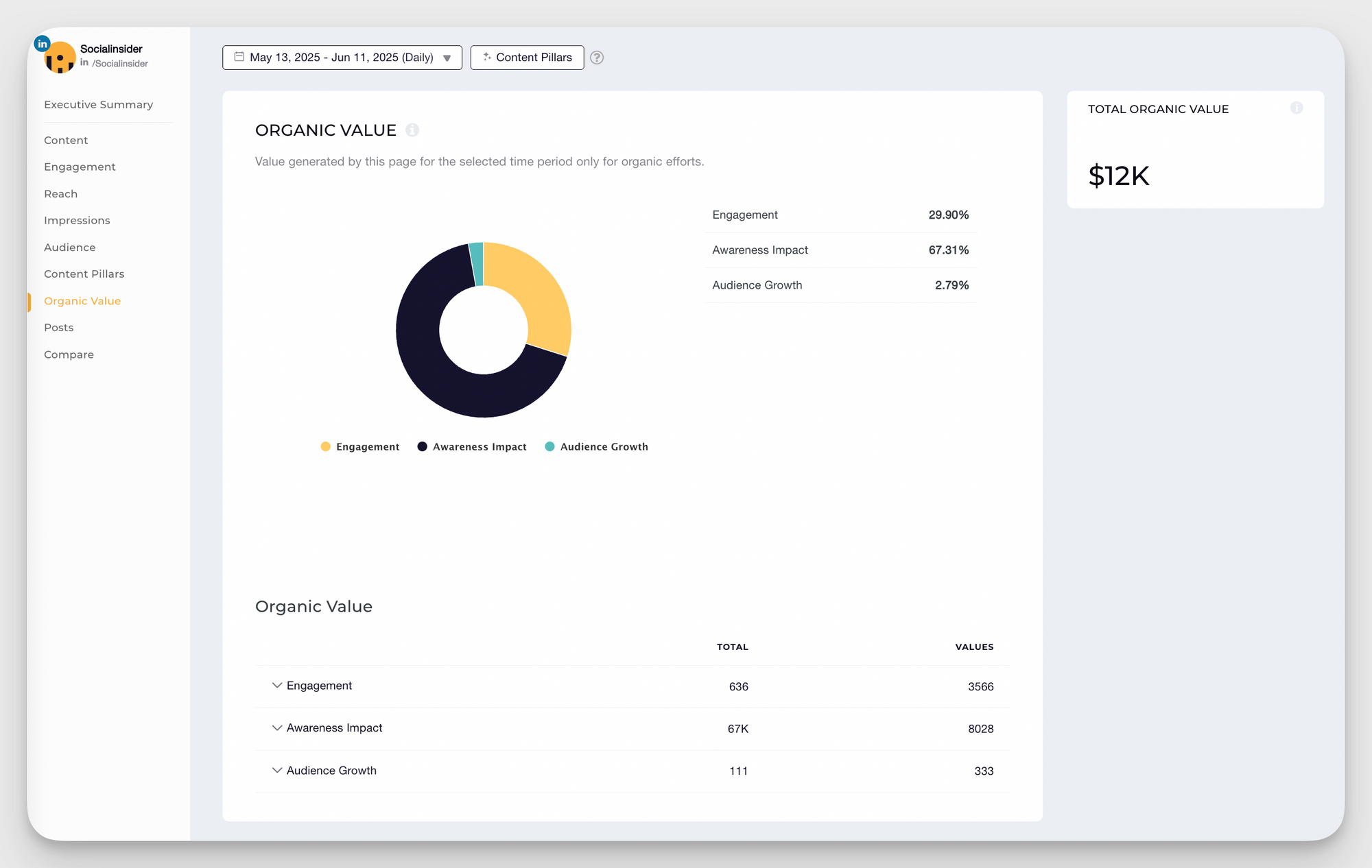
Here’s how to set it up.
- From your Socialinsider dashboard, go to Settings.
- Click on Organic Value Configuration.
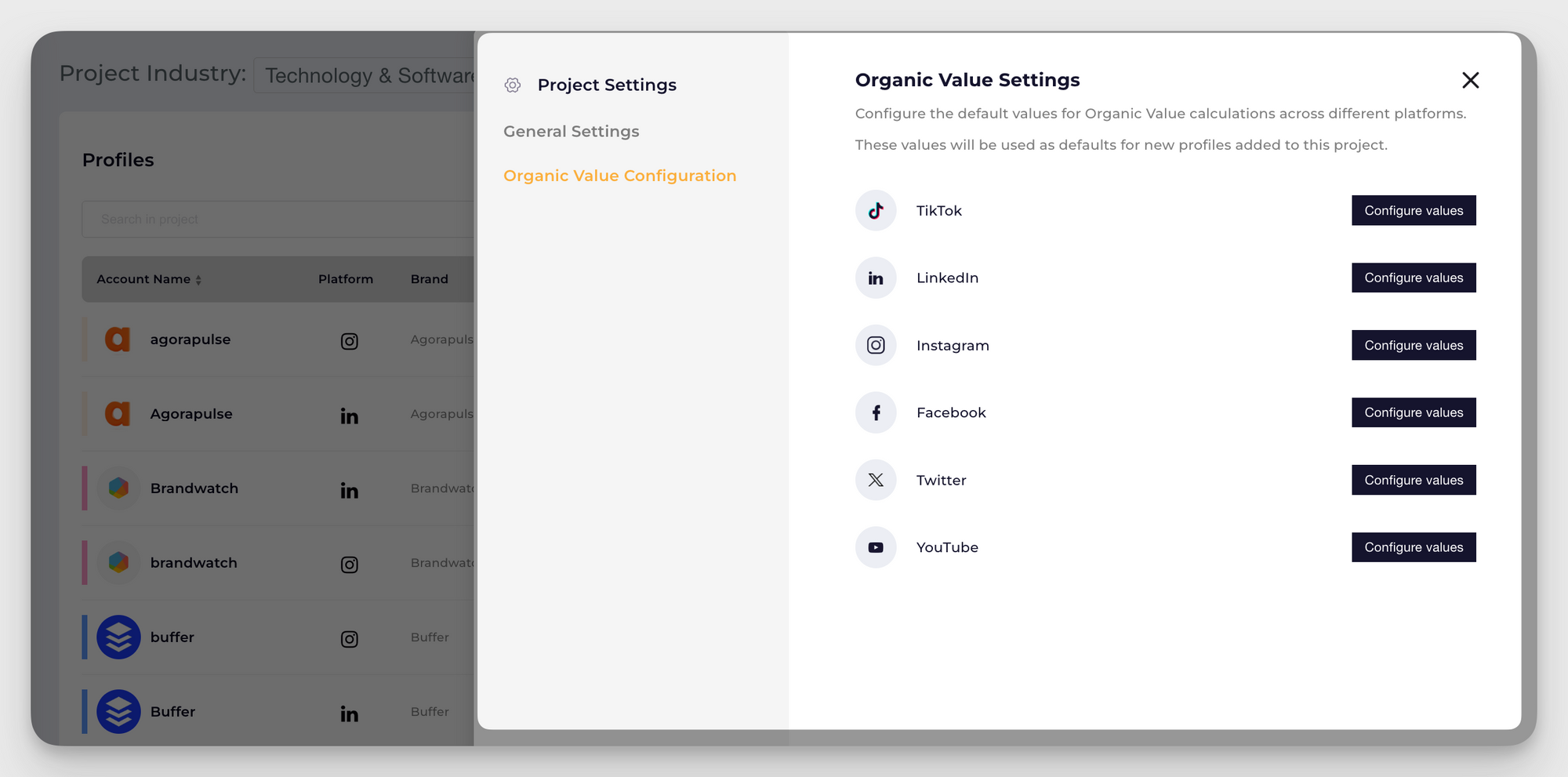
- Select the social media channels where you want this metric calculated.
- Assign custom values to different data types, such as cost-per-impression (CPM), based on your industry benchmarks.
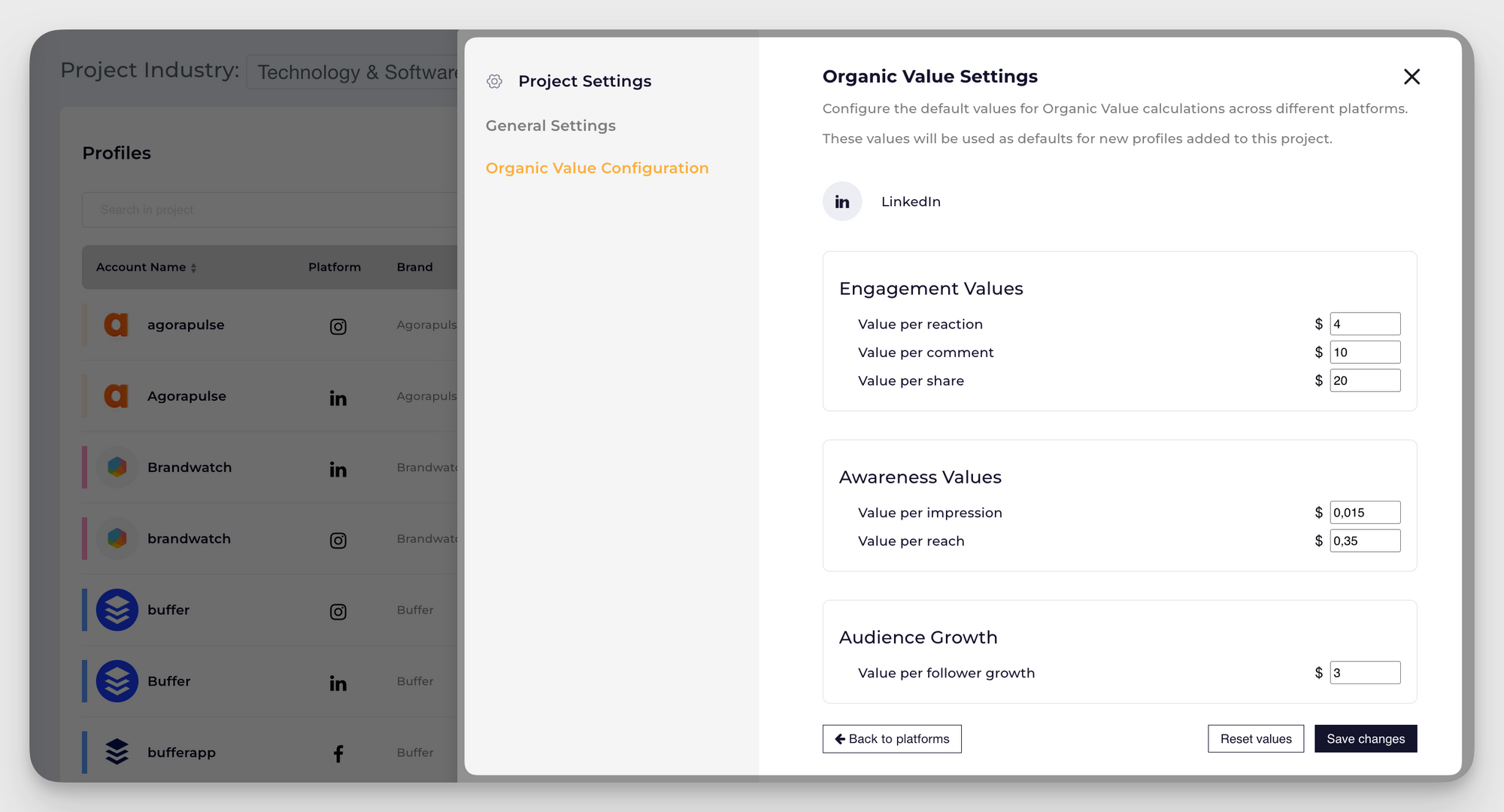
#6. Create content pillars that feed multiple distribution channels
Think of content pillars as foundational themes your brand consistently creates content around. They help you stay focused, reduce decision fatigue, and make your content highly repurposable across content distribution channels.
Let’s take an example to understand how you can create content pillars that help with distribution.
Say, you’re a B2B SaaS company. You create content pillars like -
- Product education
- Industry insights
- Customer stories
- Workflow tips
- Thought leadership
With these pillars in place, you can develop long-form content like blog posts, webinars, or reports, and extract smaller assets for other channels. Here's how that works in practice:
Let’s say you write a blog post titled “5 Workflow Mistakes Marketing Teams Make.” From this one post, you can:
- Create a LinkedIn carousel summarizing the 5 mistakes
- Turn each mistake into a short-form video for Instagram or TikTok
- Write a Twitter/X thread breaking down key takeaways
- Add a CTA in your email newsletter pointing readers to the full blog
- Repurpose stats into graphics for Pinterest or slide decks for sales
- Use quotes from the piece as replies on community forums like Reddit or Slack groups
This multiplies the reach of one piece of content without starting from scratch each time.
Once you start sharing content with these pillars, keep a track of them using tools like Socialinsider. You can get an automated content pillars summary which shows you metrics like engagement, average engagement rate, number of posts for each pillar, and impressions.
Based on this analysis, you can prioritize certain content pillars and look into the different distribution strategies for each one.
#7. A/B test distribution strategies
Your audience went bonkers over your latest article. You repurposed key insights from this article and shared it on Instagram. But you hear crickets. Was it because it was not targeted to the right audience? Or the visual wasn’t that attractive?
The only way to refine your strategy is with A/B testing.
Here’s how you can do it.
- Pick one variable to test. This ensures your results are clear and meaningful. Common A/B testing variables in digital content distribution include posting time (morning vs. evening), content format (carousel vs. video), caption style (question vs. statement), distribution channel (LinkedIn vs. Instagram).
- Create two versions of the same content. Keep the core content the same, but change only the variable you’re testing. For example, distributing a product update via LinkedIn and Instagram to see which performs better.
- Distribute simultaneously or under similar conditions. To get accurate results, publish both versions close together (same day, similar time, and same audience size) so the platform algorithm or timing doesn’t skew your data.
- Define success metrics in advance. Decide what you're measuring before you run the test. Typical metrics include:reach or impressions, engagement rate, click-through rate (CTR), conversions or sign-ups.
- Analyze and apply the learnings. Use native platforms or analytics tools like Socialinsider to evaluate performance for both the posts. Identify what worked better and scale it.
#8. Leverage user-generated content campaigns
Wouldn’t it be great if your loyal fans distributed your data reports and insightful Reels? Not only does it help you with engagement but it also positions you as a reliable and trusted brand.
Here’s how users share social media insights from our data reports and increase its reach.
Here’s how to leverage UGC for content distribution effectively.
- Align UGC with your audience’s desires: Choose themes your community cares about — vacations, daily routines, creative uses of your product, new data. The easier it is to participate, the more content you'll receive.
- Use a branded hashtag and aggregator tools: Hashtags like #ShotoniPhone or #ShareACoke make it simple to find and curate submissions. Use tools like Walls.io or Onstipe to auto-collect UGC across channels and feature it on your website, social feeds, email newsletters, even event displays.
- Incentivize participation: Offer rewards in exchange for user submissions. If this is taking it too far, you can even give a shoutout to your loyal creators and leave thoughtful comments on their content. The more they feel seen and valued, the more likely they are to keep distributing your content.
- Showcase community work prominently: Repost UGC on your official channels. This validates creators and inspires others.
Platform-specific social media content distribution tactics
You won’t share the same content in the same way on Instagram and LinkedIn. The same applies for content distribution. Let’s look at how you can tweak your B2B content distribution strategy for different platforms.
- Post natively instead of linking out: Facebook prioritizes native content (photos, videos, carousels) over external links. Share blog insights as a mini-post or infographic to increase reach and engagement. You can add the link in the comments for people who want to read the entire blog.
- Leverage Facebook Groups for niche distribution: Share relevant content in industry-specific groups (or create your own branded community). These groups offer high engagement and better organic visibility. For example, we have our Socialinsider private group on Facebook where we distribute content and encourage members to discuss things around social media.
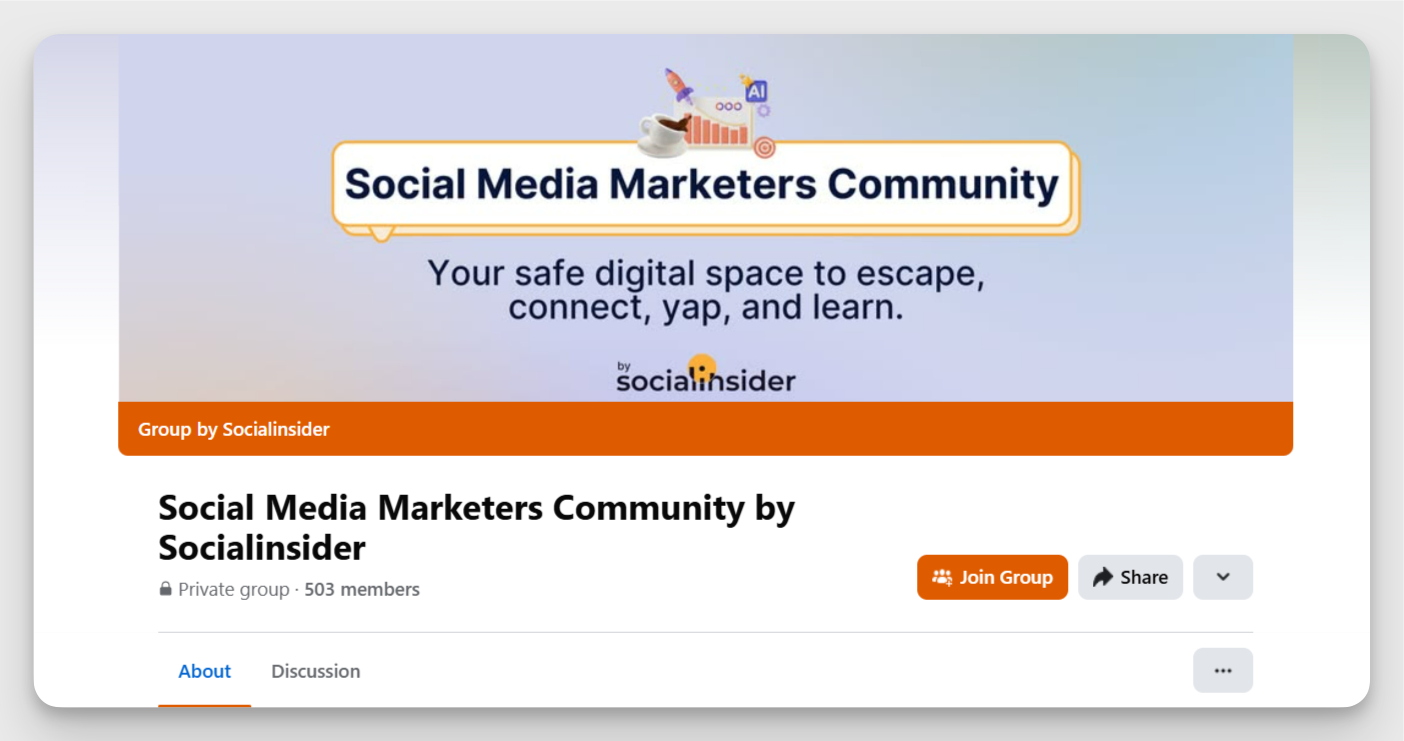
- Pin high-performing posts to your page: Boost visibility of important content by pinning it to the top of your Facebook Page. Ideal for campaigns, product launches, or lead magnets.
- Use Facebook Stories for time-sensitive content: Stories are underused but effective for promos, updates, or highlighting recent blog posts with a CTA sticker.
- Tag collaborators and cross-post strategically: Tagging partners, employees, or featured clients in posts helps increase the distribution of content through shared audiences.
- Boost posts with small budgets: Identify organic top-performers, then boost with a small ad spend to scale reach. Use A/B testing on visuals or CTAs for optimization.
- Use content series to build anticipation: Break long-form content into a multi-post series across Reels, carousels, and Stories to keep your audience engaged over time.
- Mix different content formats: Don’t stick to one content format. For example, we use carousels for key statistics and quotes and Reels for scripts based on surprising facts or tips. Here’s a Reel that starts with an engaging hook.
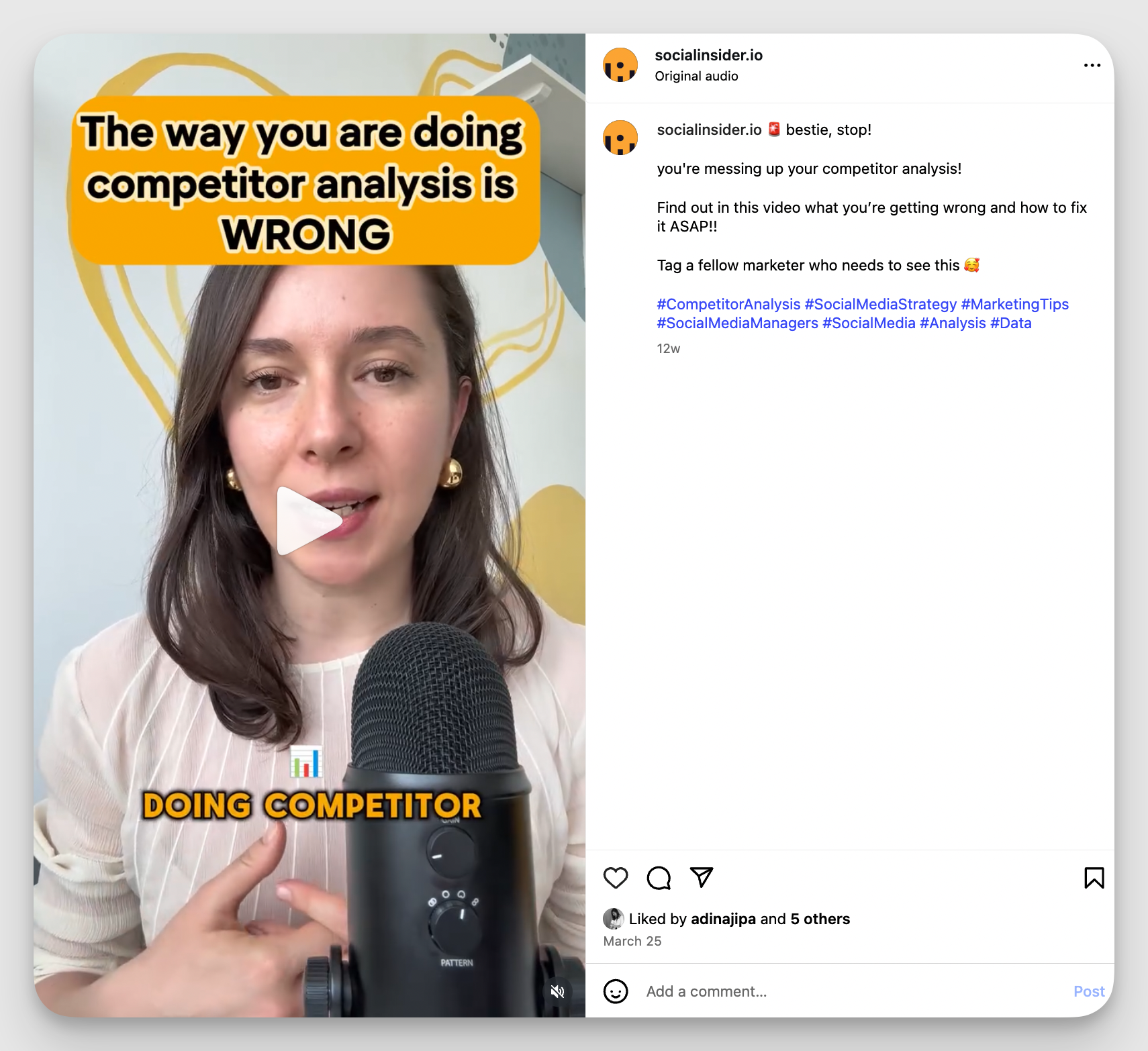
- Optimize bio and link in bio: Use tools like Linktree or Later’s Linkin.bio to drive traffic from posts to blog content, product pages, or sign-ups, especially for distributing longer-form content off-platform.
- Leverage Reels with trending audio: Instagram currently prioritizes Reels. Repackage content insights or stats into short, engaging videos using trending sounds to increase discoverability.
- Use the ‘Add Yours’ sticker in Stories: Encourage followers to participate in UGC around a content theme or campaign. This helps distribute content through their networks.
- Collaborate on posts: Use Instagram’s Collab feature to co-author posts with influencers, team members, or partners. This shared visibility doubles reach.
- Identify best performing stories: Find which stories got a lot of reach and views. You can use tools like Socialinsider to get this insight.

TikTok
- Jump on trends quickly: Monitor the Discover page and For You feed daily to spot trending sounds, formats, and challenges. Repackage your content to match those trends while keeping it brand-relevant.
- Create snackable, value-packed videos: Break down longer content (like blogs or webinars) into quick, digestible tips or ‘did-you-know facts, ideal for TikTok’s short attention span.
- Use native editing tools and text overlays: TikTok favors content created in-app. Add captions, effects, and text overlays that highlight key takeaways from your core content.
- Duet or Stitch relevant creators: Respond to industry influencers, customer testimonials, or news events to distribute your POV into ongoing conversations. It also exposes your content to their audiences.
- Post consistently, not just occasionally: TikTok’s algorithm rewards frequency. Distribute one idea across multiple videos using different hooks or delivery styles to see what sticks.
- Leverage keyword-rich captions and hashtags: TikTok’s search is improving. Optimize your content with relevant keywords to show up in topic-specific search results.
- Engage in comments actively: Answer questions with video replies or drop thoughtful takes. This boosts visibility and distributes your expertise organically.
Twitter/X
- Break down long-form content into threads: Twitter threads are a powerful way to distribute complex ideas or blog insights.
- Experiment with different thread lengths and formats: Not all threads need to be 10 tweets. Some may work better as a concise 3-5 tweet series.
- Lead with a strong, curiosity-driven opener: Your first tweet determines whether someone clicks ‘Show more.’ Ask a question, tease a surprising stat, or promise actionable takeaways.
- Post during real-time trends or news cycles: Tie your content into current conversations by using relevant hashtags or referencing breaking industry developments.
- Tag relevant accounts in your niche: Mention thought leaders, tools, or brands cited in your content. This increases the likelihood of shares or replies from accounts with larger reach.
- Pin top-performing threads to your profile: Keep your best content visible by pinning it. This is great for ongoing lead generation or content promotion.
- Engage in replies and quote tweets: Distribute your expertise by replying to trending posts or retweeting with your perspective, linking back to the content when relevant.
YouTube
- Turn webinars into evergreen video content: Record live webinars, then trim and republish them as structured YouTube videos with chapters, timestamps, and clear titles. Here’s how we do it at Socialinsider.
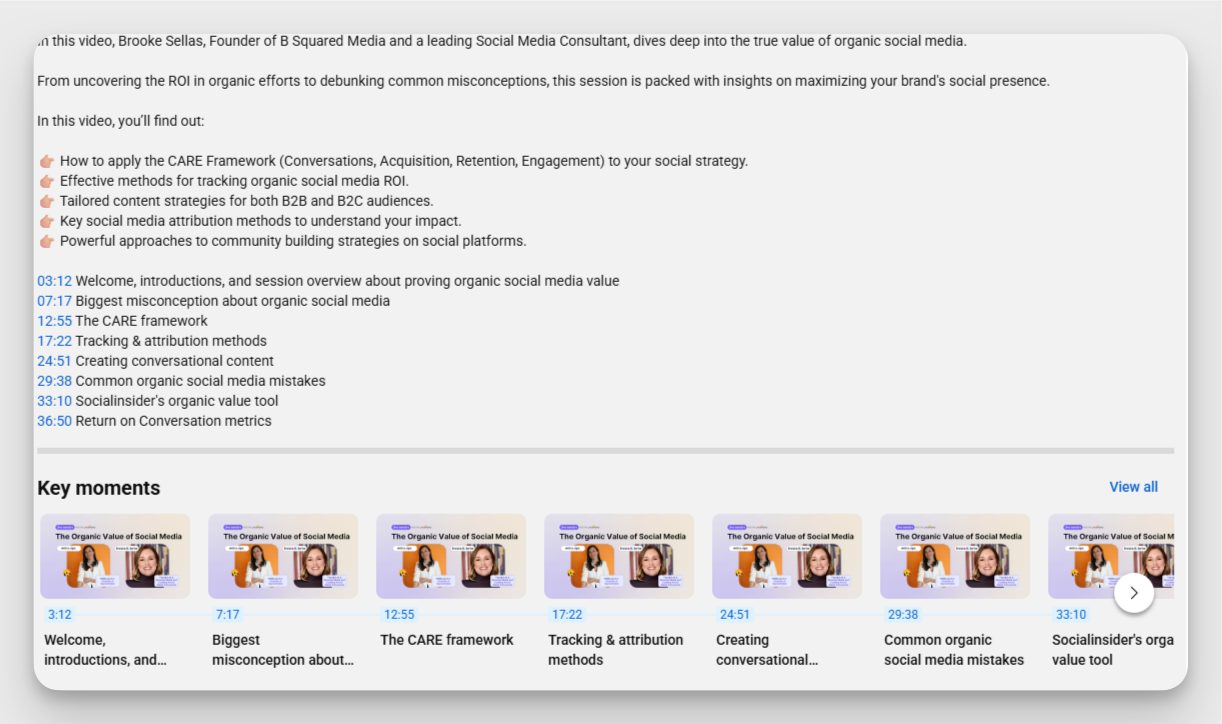
- Create short video teasers for longer content: Break down full videos or blog posts into 60-90 second highlight clips. Use these as Shorts to tease the full video and drive traffic back to it.
- Optimize video metadata for search: Include relevant keywords in your title, description, and tags. This helps your content show up in YouTube search and Google SERPs.
- Cross-promote across video end screens: Link to related videos or playlists at the end of your content to keep viewers in your ecosystem longer.
- Repurpose high-performing content from other platforms: Expand on a viral Tweet or popular LinkedIn post as a talking-head video or explainer.
- Use playlists to guide content discovery: Group videos by theme (For example, ‘Case Studies,’ ‘Tips & Tricks’) to encourage binge-watching and easier navigation.
- Collaborate with industry experts for interviews or co-hosted videos: These widen your reach while providing valuable, sharable content.
- Publish LinkedIn newsletters for recurring distribution: Turn your long-form content into a recurring newsletter on LinkedIn. Subscribers get notified via email, increasing both reach and engagement for each issue.
- Use thought-leadership posts to summarize key insights: Don’t just drop a link. Extract a compelling takeaway from your blog or report and frame it as a personal insight or observation. This encourages conversation and sharing.
- Tag collaborators, teammates, or sources: If your content includes input from others, tag them in your post. It boosts reach as their networks may also engage.
- Share carousels: Repurpose blogs or guides into bite-sized slides. These tend to perform well in-feed and can summarize value without needing a link click.
- Start discussions, not just broadcasts: End posts with open-ended questions or challenges related to your content. Engagement helps distribute your post more widely in the feed.
- Repurpose content into ‘first-person’ storytelling: Instead of just company posts, reframe blog ideas as founder insights, behind-the-scenes learnings, or team reflections for stronger emotional connection.
- Join and engage in LinkedIn Groups: Share content where professionals gather in your niche. It’s a great way to distribute posts to highly relevant, engaged communities.
Final thoughts
At the end of the day, even the best content needs a solid distribution plan to drive results.
Whether you’re repurposing top-performing posts, collaborating with influencers, or doubling down on employee advocacy, distribution helps extend your content’s shelf life and reach.
Start small, test often, and optimize continuously — because a smart distribution strategy doesn’t just boost visibility, it amplifies impact.
Analyze your competitors in seconds
Track & analyze your competitors and get top social media metrics and more!
You might also like
Improve your social media strategy with Socialinsider!
Use in-depth data to measure your social accounts’ performance, analyze competitors, and gain insights to improve your strategy.






